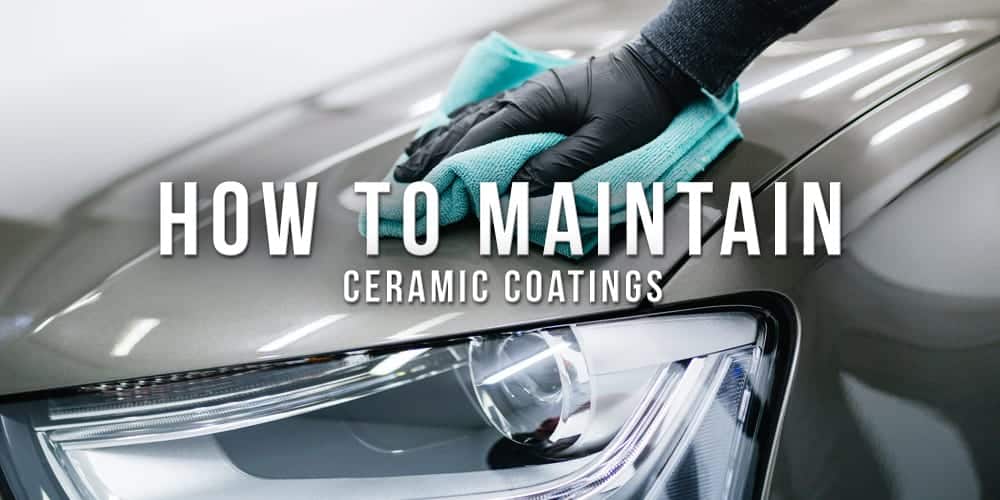10 Myths About Final Touch Auto Works Ceramic Coatings—Debunked!
10 Myths About Final Touch Auto Works Ceramic Coatings—Debunked!
Blog Article
The Ultimate Guide to Ceramic Coatings: Enhancing Your Auto's Finish and Sturdiness
If you're aiming to boost your auto's appearance and defense, ceramic layers could be the solution you've been browsing for. These advanced finishings bond with your vehicle's paint, producing a long lasting barrier versus ecological damages. Just how do they stack up against typical wax? Comprehending the benefits and application procedure can make a substantial distinction in your auto care regimen. Allow's explore what makes ceramic finishings a beneficial investment for your automobile.
What Are Ceramic Coatings?
Ceramic finishings are innovative protective layers that boost your vehicle's exterior. They're made from a fluid polymer that chemically bonds with your automobile's paint, creating a durable guard. Unlike standard wax or sealants, which subside in time, ceramic layers give durable protection versus ecological pollutants like UV rays, dirt, and chemicals.When you use a ceramic finish, you're purchasing a barrier that fends off water, making it simpler to cleanse your car and maintaining it looking newer for longer. This modern technology aids preserve the honesty of your paint, decreasing the threat of scratches and oxidation.Ceramic finishes come in various formulations, each created to accommodate different requirements and preferences. You can select a do it yourself set or select expert application, depending upon your comfort level and budget. Overall, ceramic coatings represent a sophisticated service for maintaining your vehicle's aesthetic allure and durability.
Benefits of Ceramic Coatings
When you purchase a ceramic coating, you expose a variety of benefits that surpass plain visual appeals. To start with, it gives remarkable defense against environmental contaminants like dust, bird droppings, and UV rays, keeping your vehicle's paint looking brand-new much longer. You'll notice that maintenance becomes easier, as the hydrophobic homes create water and crud to move off easily. This indicates much less time invested washing and outlining your vehicle.Additionally, ceramic coverings can boost the glossiness of your car's surface, giving it that display room shine. They additionally offer resistance to scratches and swirl marks, which helps keep your lorry's resale value. With a ceramic layer, you're not just protecting your financial investment; you're additionally enhancing its total look and longevity. Ultimately, this innovative innovation warranties your automobile sticks out while appreciating lasting benefits that typical waxes simply can't match.
The Application Process: Just How to Apply Ceramic Coatings
Applying a ceramic covering entails several vital steps to ensure suitable results. First, thoroughly wash your cars and truck to get rid of any type of dirt, gunk, or contaminants. This assures the surface area is clean and prepared for the finish. Next off, sanitize the paint utilizing a clay bar to remove ingrained bits. Later, evaluate the paint for blemishes and brighten it to attain a smooth surface.Once your car's surface area is prepped, use the ceramic covering in tiny sections. Make use of an applicator pad to spread the finishing evenly, following the manufacturer's directions. Allow the covering to treat for the recommended time, commonly in between one to two hours, depending upon the product.Finally, avoid washing your auto for a minimum of a week to allow the finish bond effectively. Adhering to these actions will help you achieve a long lasting, high-gloss surface that shields your automobile for several years ahead.

Comparing Ceramic Coatings to Traditional Wax
After ensuring your auto's surface area is perfectly prepped with a ceramic finish, it's time to ponder exactly how this modern service compares to typical wax. Ceramic coatings supply a robust layer of security that lasts for several years, while wax generally provides just a couple of weeks of luster. You'll notice that ceramic layers bond with your paint, developing a hydrophobic surface that repels water and dirt, making maintenance easier.In comparison, traditional wax sits on top of the paint and needs constant reapplication. With ceramic finishings, you obtain premium scratch resistance and UV protection, assisting to avoid fading and oxidation. While the preliminary investment for a ceramic covering is greater, the long-term advantages typically exceed the costs. So, if you're searching for resilience and boosted gloss, ceramic finishings are a clever option over traditional wax.
Maintenance Tips for Your Ceramic Coated Car
To maintain your ceramic-coated vehicle looking beautiful, regular maintenance is essential. Beginning with a gentle laundry making use of a pH-balanced shampoo; avoid extreme cleaning agents that can degrade the layer. Utilize a microfiber laundry mitt to avoid scratches and constantly wash completely to eliminate any type of soap residue.After washing, dry your automobile with a soft microfiber towel to stay clear of water spots. Take into consideration applying a ceramic maintenance spray every couple of months to improve the layer's hydrophobic homes and include an additional layer of protection.It's additionally a good idea to avoid automated vehicle cleans with abrasive brushes, as they can damage the finish. Rather, select hand washes or touchless laundry choices. Furthermore, regularly check your vehicle for impurities like tree sap or bird droppings and resolve them promptly to protect against etching. Following these pointers will help maintain the shine and resilience of your ceramic-coated automobile for years to find.
Typical Myths Regarding Ceramic Coatings
In spite of the excellent benefits check over here of ceramic coatings, numerous misconceptions can develop complication for cars and truck proprietors. One usual false impression is that ceramic layers eliminate the demand for maintenance. While they do supply enhanced defense, regular cleaning and care are still important to preserve that high-gloss finish.Another misconception is that these finishings are scratch-proof. While they give a solid layer of protection against small scratches, they can't withstand severe influences or rough materials.Many likewise think that ceramic coatings will certainly make their autos immune to all impurities. In truth, they drive away dust and water but will not protect against concerns like bird droppings or tree sap from causing damage if left unattended.Lastly, some think that applying ceramic finishes is a DIY task any individual can deal with, yet attaining a flawless application usually needs professional knowledge to guarantee peak outcomes.
Selecting the Right Ceramic Finishing for Your Auto
Just how do you choose the ideal ceramic finishing for your automobile? Beginning by taking into consideration the degree of protection you require. If your automobile faces severe weather or regular road journeys, decide for a premium layer that provides remarkable resilience and resistance to scrapes, UV rays, and chemical stains.Next, consider the application approach. Some finishes require expert installation, while others are DIY-friendly. If you're experienced, a DIY product may conserve you cash, however for the most effective results, a professional can guarantee proper application.Don' t neglect to examine the durability of the finishing. Some last a few years, while others can secure for a decade or even more. Read evaluations and endorsements to gauge user contentment. By considering these aspects, you'll locate a ceramic finishing that not only enhances your vehicle's appearance but likewise provides lasting security.
Frequently Asked Concerns
For How Long Do Ceramic Coatings Last on Typical?
Ceramic coatings generally last anywhere from two to five years, relying on aspects like application, upkeep, and ecological problems. You'll intend to comply with correct treatment regimens to maximize their longevity and effectiveness.
Can Porcelain Coatings Be Applied Over Paint Scratches?
You can't apply ceramic layers over paint scrapes successfully. It's ideal to repair any scrapes initially, ensuring a smooth surface - Final Touch Auto Works Ceramic Coatings. In this manner, the covering bonds correctly and provides excellent security for your car's finish
Are Ceramic Coatings Safe for All Automobile Surface areas?
Ceramic layers are normally risk-free for many automobile surface areas, consisting of paint, glass, and wheels. Nonetheless, it is important to inspect certain item guidelines, as some finishes might not appropriate for particular products or surfaces.

Will Porcelain Coatings Protect Versus UV Damage?

Can I Do Touch-Ups on Ceramic Covered Surface Areas?
You can do touch-ups on ceramic covered surfaces, however it's critical to utilize compatible products. Validate the location is tidy and follow proper application strategies to maintain the layer's honesty and efficiency. Unlike standard wax or sealants, which put on off read what he said over time, ceramic finishes offer durable protection versus ecological contaminants like UV rays, dust, and chemicals.When you apply a ceramic covering, you're investing in an obstacle that pushes back water, making it much easier to cleanse your automobile and keeping it looking more recent for longer (Final Touch Auto Works Ceramic Coatings). Afterward, evaluate the paint for imperfections and polish it to achieve a smooth surface.Once your cars and truck's surface is prepped, apply the ceramic coating in tiny sections. Allow the coating to cure for the suggested time, generally between one to two hours, depending on the product.Finally, stay clear of washing your vehicle for at least a week to allow the layer bond appropriately. Consider applying a ceramic upkeep spray every few months to boost the covering's hydrophobic properties and include an additional layer of protection.It's likewise wise to avoid automatic auto cleans with abrasive brushes, as they can damage the covering. his comment is here Ceramic finishes are normally risk-free for most cars and truck surfaces, including paint, glass, and wheels
Report this page